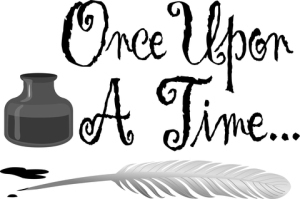A Post For New Writers: If The Scene Doesn’t Add To the Plot, Throw It Out

A Post For New Writers
This is another hard one, but this will prevent your story from getting bogged down. Your goal is to write a compelling story, and a compelling story is one in which the reader has a hard time putting the book down. You want to make it hard for your reader to go to bed, get up to make dinner, go to work, etc. You want your reader to be thinking about your book when they’re not reading it or to be so engrossed in the story that they finish it in one sitting. This is hard to do if you add scenes to your story that don’t advance the plot.
The plot is your main idea. Everything you write should support the main idea. All your minor ideas must move the main idea along.
Ever hear people say they skimmed a book or there was a sagging middle? The reason for this is the extra scenes that didn’t add to the plot. They were fillers.
Some writers use unnecessary scenes for several reasons:
They find the scene cute, funny, or interesting in some way so they want it in the book.
They honestly don’t realize they’re rambling.
They want to boost word count.
They were told to add more by a publisher so they had to put something in there.
They heard that to maximize sales potential, they should write X number of words in a book. And since they want to maximize sales potential, they will write whatever they need to in order to make that word count.
They don’t think the reader got the idea the first time so they repeat it over and over so it “sticks”.
In the end, less is often more.
You might have your heart set on writing a 70,000-word book, but if the story ends at 60,000 words, then let it end. Maybe you wanted to write a full-length novel (which is 50,000 words), but your story ended up being a novella at 30,000 words. It’s okay to have a shorter story than what you planned. You are much better off having a tight, solid story that engages your reader every step of the way than having a longer story that drags on. Even if the book is part of a series and the other books in the series is 70,000 words, let this particular book be 60,000 words if that’s what it’s meant to be.
You would much rather hear, “I wish there was more” than “I never thought the book would end.”
Readers will forgive you if you miss a typo or don’t get something 100% correct, but they won’t forgive a boring book. (Disclaimer: Strive to have a book that is error free, but remember that we’re all human and humans aren’t perfect. Yes, editing is very important, but you should edit a compelling story, not a boring one.)
While you’re writing your first draft, by all means, add in all the scenes you want.
You don’t know until the book ends if you will need the scene or not. Books are fluid. They often change as we’re writing them. You might think your book is going in one direction, but something happens to a character that throws everything off course. Then you have to change the rest of the story. That’s okay. In fact, it’s common.
But when you are done with the first draft, go through and remove all unnecessary scenes, dialogues, or actions.
On average, I cut 2,000 to 5,000 words from every story I write because I’m removing all unnecessary elements from it. If you write a tighter first draft than I do, then this won’t be the case for you. I tend to do a lot of repetition on my first run through a story.





